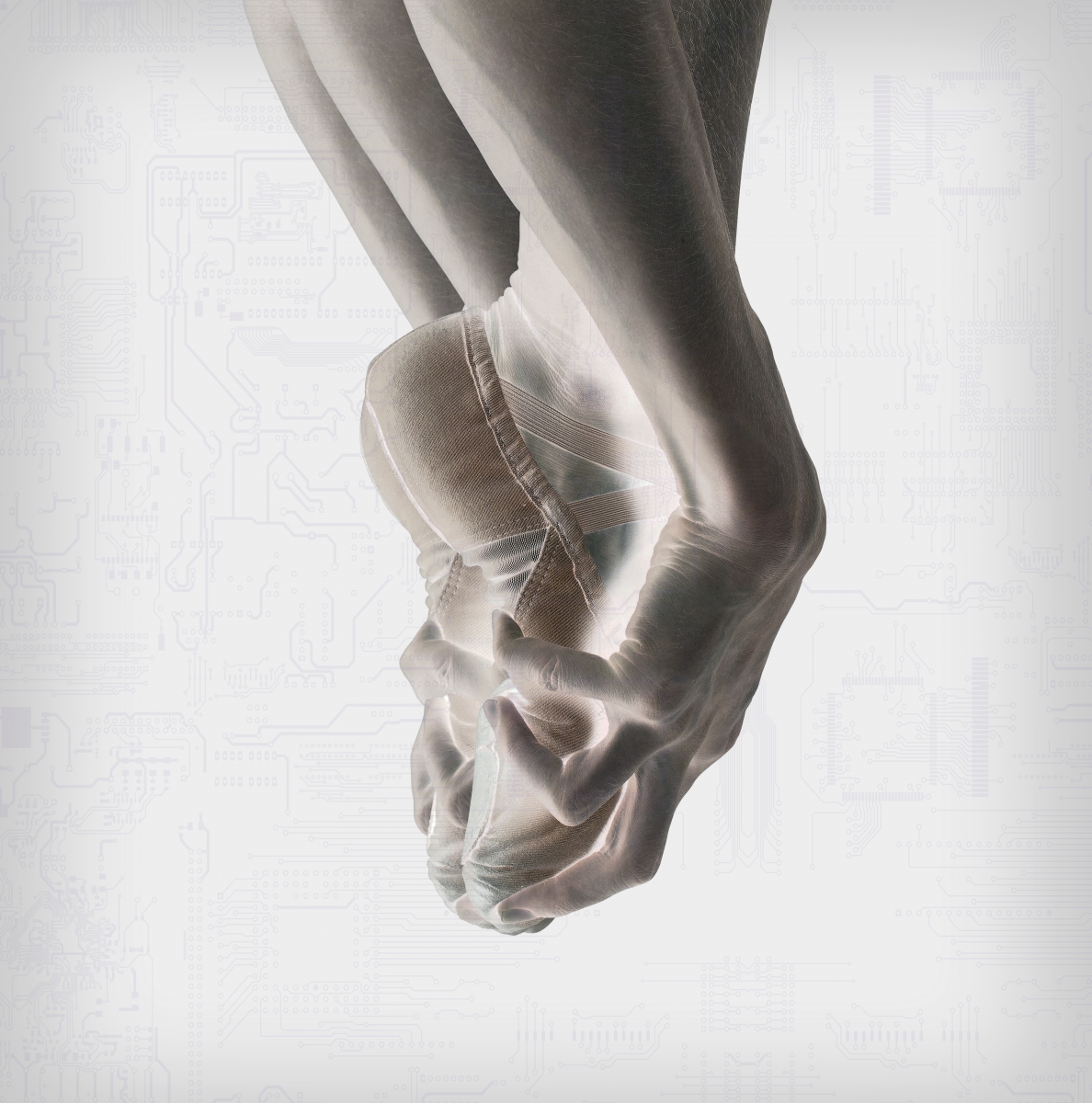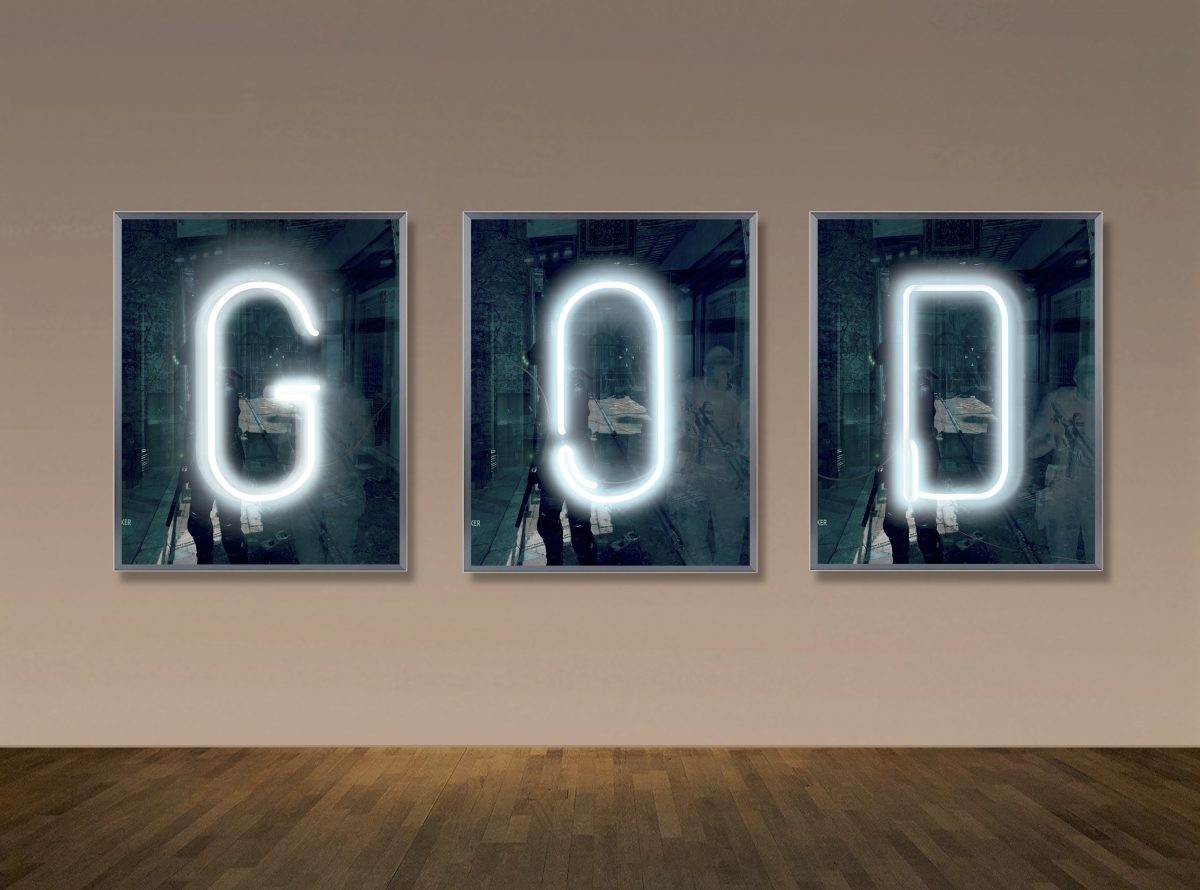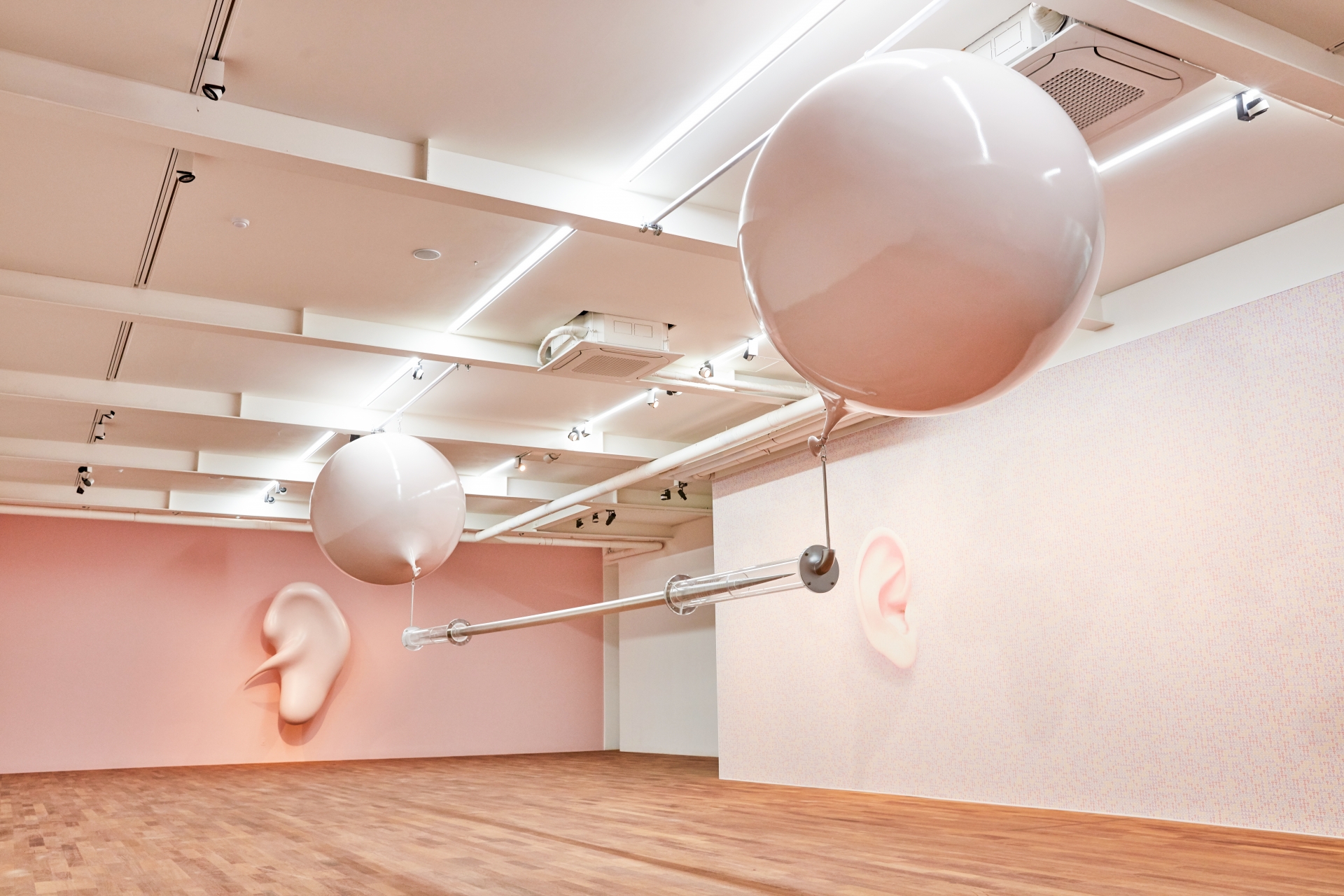Kim Geumyoung (Kim): Compared to the Piggy, Piggy Plantation project, the visuals of your work seem to have softened in this exhibition.
Yoon Youngseok (Yoon): They have become more varied in form rather than gentler. I have always been interested in the question of ‘how far will a human being go in pursuit of their desires?’ The Piggy, Piggy Plantation project was also based on this question. I had a great shock when I saw people injecting sperm collected from a pigsty into a sleeping sow with a syringe for the gestation. The sow is constantly being fed in a space in which it is hard to move, and repeated production, which can’t really mean ‘giving birth’. There was no natural mating. It was shocking that we are artificially producing pigs to meet human economic desire. It is not limited to the pigsty. We make problematic dog factories, cross-breed and multiply dogs for the pet industry, and now we are making robots. How far do humankind desires reach, and for what end do they rush to these extremes? What is humankind after all? My work is an extension and evaluation of these questions.
Kim: You consider yourself a ‘Sophiens’ in this exhibition. What are the Sophiens?
Yoon: It is a word that I coined by combining Greek sophisticates or ‘Sophist’, which refers to wise men, and ‘Sapiens’, which means present humanity. It refers to the irony of modern people, who have developed civilization to attend to their desires but cannot keep up with the rapid rate of development or the resulting problems, to the Sophist who has fallen into the sophistry of oneself.
Kim: In Gallery 1, a sculpture AHIO that is reminiscent of an astronaut, appears. What does AHIO mean?
Yoon: It is an abbreviation of ‘Artificial Human Illusional Object’. The AHIO’s presence is an exact symbol of our present and future. When I stood in front of the mirror with my son, who is in the military service, my son was over 10cm taller than me, and his physique is well built. On the other hand, my body, which I thought has long been under my control, became very thin and small. In the mirror, I saw modern people, modern human beings, and sapiens, whose body was relatively fragile and weakened, and the head is getting bigger as a result of digital civilisation. I started sketching at the point of this thought. At the end of AHIO’s limb, I installed a tilted rear-view mirror. The development of digital civilization seems to have broadened the world that individuals can experience, but the reality is that they do not see the nearest reality, the important truth of life. I wanted to see what the advancement of ultramodern technology and civilization can be for humans, and how humans are changing within it.

Yoon Youngseok, Ballerino, Micro-lenticular morphing lens, 110×110cm, 2018
Kim: In Gallery 2, Ballerino, which contains the dynamic movement of the ballerino and Aibo in window, featuring an A.I. robot dog, were installed together. The gesture of the ballerino, that is felt to be humanly, and movement of the artificial robot dog, seems to oppose one an other.
Yoon: There was an underlying intention to confront the conflicting two stories. Ballet, a pure art, is created through the most beautiful and human gestures made by human. The human effort to devote to uncalculated pure art is exciting and beautiful. There is a myriad of discourses on artificial intelligence and on the Fourth Industrial Revolution, and the Japanese electronics company SONY even made a robot dog which yawns and even acts charming. Studies on humans and other forms of life cloning are already underway. In our world, of human things and inhuman stories, the beautiful and the eerie coexist and intersect. I wanted to make the viewers feel it implicitly rather than reveal the extremes of this world.
Kim: The Neon God installed on one side of the exhibition hall attracts attention. Is this a cry like ‘Oh, God!’, to seek salvation from this turbulent world?
Yoon: This work expresses the chaos between the virtual world and the real world. A hypothetical neon sign ‘God’ seems to be glowing like a real light and to be caught in the hand, but it is just an optical illusion. The 3D lenticular lens image creates an illusion that virtual space exists inside. This wallpaper began by chance with the scenery viewed from a PC room in the neighbourhood. Young students were enthusiastically engaged in war games, killing people using all kinds of injury and insults. It was confusing that an online game, a virtual world, could solve issues faced in reality, those issues that are hard to stand unless one buries oneself in something. I was also confused that the solution came from real war.
Kim: You have been used a lenticular throughout your work.
Yoon: For me, the micro-lenticular lens is an important medium to touch the sense of ‘seeing’, the nature of visual art. The distance of about 6 – 7cm between human eyes exists. The distance value of left eye differs from of the right eye. It is called binocular disparity, and a person feels the sense of distance and stereoscopic effect. Lenticular creates an illusion of a three-dimensional screen by using this binocular disparity to make viewers feel a depth and distance that don’t exist. Lenticular, which causes a disturbance of sensation by the cubic effect that is impossible in reality, let people realise how imperfect the human attitude that only one sees with their eyes is the true version of reality. The attitude of the people watching the lenticular works is also interesting. Generally, when viewing the pictures and videos displayed, they are appreciating those by standing, but in the case of a lenticular work, people walk or move themselves to experience the movement of the screen.

Yoon Youngseok, Neon GOD, 3D micro-lenticular lens, 140×110cm (each), 2018
Kim: If Galleries 1 and 2 solve the question of the story in a social context, the 3 is a very private space. You here explained the autobiographical tale of tinnitus, which you have suffered ever since an accident when you were young.
Yoon: I continue to work in a way that contrasts lived experience, and the most significant questions and discussions in this era lie with very small or personal events. My doctor said, ‘In fact, tinnitus cannot be fixed. You must try to get used to it’. My desperation was significant. As I live with the tinnitus progresseing for 30 years, there is a distinct feeling that the soundscape is made in the ears as the scenery is made in the dream. Tinnitus is a physical illusion that occurs when the nerves breakdown, not the actual sound. I think the point that I felt something doesn’t exist as a clear reality matched the theme of my work.
Kim: Most of your work begins with an experience that you have seen or felt.
Yoon: I respond to huge events that happen in society and to very private things which make me tremble. While studying in Germany I drove 12 hours from Berlin to Stuttgart. I wanted to see a little light in the rear-view mirror on a dark night on an Autobahn, and in just a few seconds, a high-end sports cars just behind me blinked. The phrase of the rear-view mirror that was not in sight was engraved again: ‘Objects may be closer than they appear’. This phrase was very important to me when I started working on objects. It was a sentence that made me realise that there might be other concepts or discourses behind what I actually see.
Kim: What stories will you develop in your future work?
Yoon: I want to keep on telling the story of humankind, and where human beings are and where they are headed.





